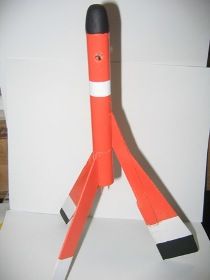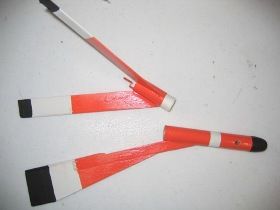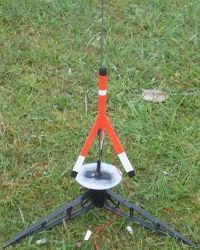Plan Cyclone Maple Seed Rocket
Jonathon Mills - Cyclone Maple Seed Rocket {Plan}
Contributed by Wayne Hill
| Manufacturer: | Jonathon Mills |
| Style: | Helicopter |
Brief: Construction: This was a fairly easy build. I would place it about Skill Level 2. The Spin Fin unit is heavy and will need a fin jig or use of CA to tack in on to the body tube. My first attempt with Aileene's Tacky Glue fell off from the weight about an hour after attaching it. It needs to cure before it can support the weight of the fin. Finishing: Flight: The first flight was straight and true. The rocket separated perfectly at apogee. The spin unit immediately took the maple seed spin configuration and slowly gyrated down. The stabilizer unit does a helicopter style descent. The stabilizer hit the ground softly about 10 seconds before the spin unit. Recovery: Summary:
I was getting into my car and several maple seeds fluttered down from my neighbor's maple trees onto the windshield. I picked one up and said to myself "Nature's perfect monocopter". I love flying helicopter recovery rockets. If you are with me at a launch I will always send up at least one. As I stood holding the maple seed, I remembered something I read online. I had seen references to "maple seed" recovery rockets in my research. I began again to scour the web for more information and to my delight I found plans on the education web site of University of Indiana.The plans are for a rocket called the Cyclone. The rocket incorporates the maple seed recovery method as it splits into 2 parts at apogee, the "spin" unit and the "stabilizer" unit. You can also see my website for further info.
The parts list:

I rarely paint any of my helicopter recovery rockets. I try to keep them as light as possible for their performance. I did however paint this with a single coat as per the image on the website. I made a few mods to the paint scheme but it's pretty close.
The suggested motors are 1/2A3-2T for the first flight and A3-4T for standard flights. The best thing about this rockets is that the preflight prep is so easy. Just put the rocket halves together and put in a motor. That's it!
Both units landed on the ground softly about 10 yards from each other. The spin unit tends to drift further due to it's slower descent. Within a minute I had it back together and loaded with a motor ready for it's second flight.
This is a great little rocket. If you enjoy the Gyroc or other helicopter recovery rockets, then you will enjoy this.
Sponsored Ads
 |
 |











